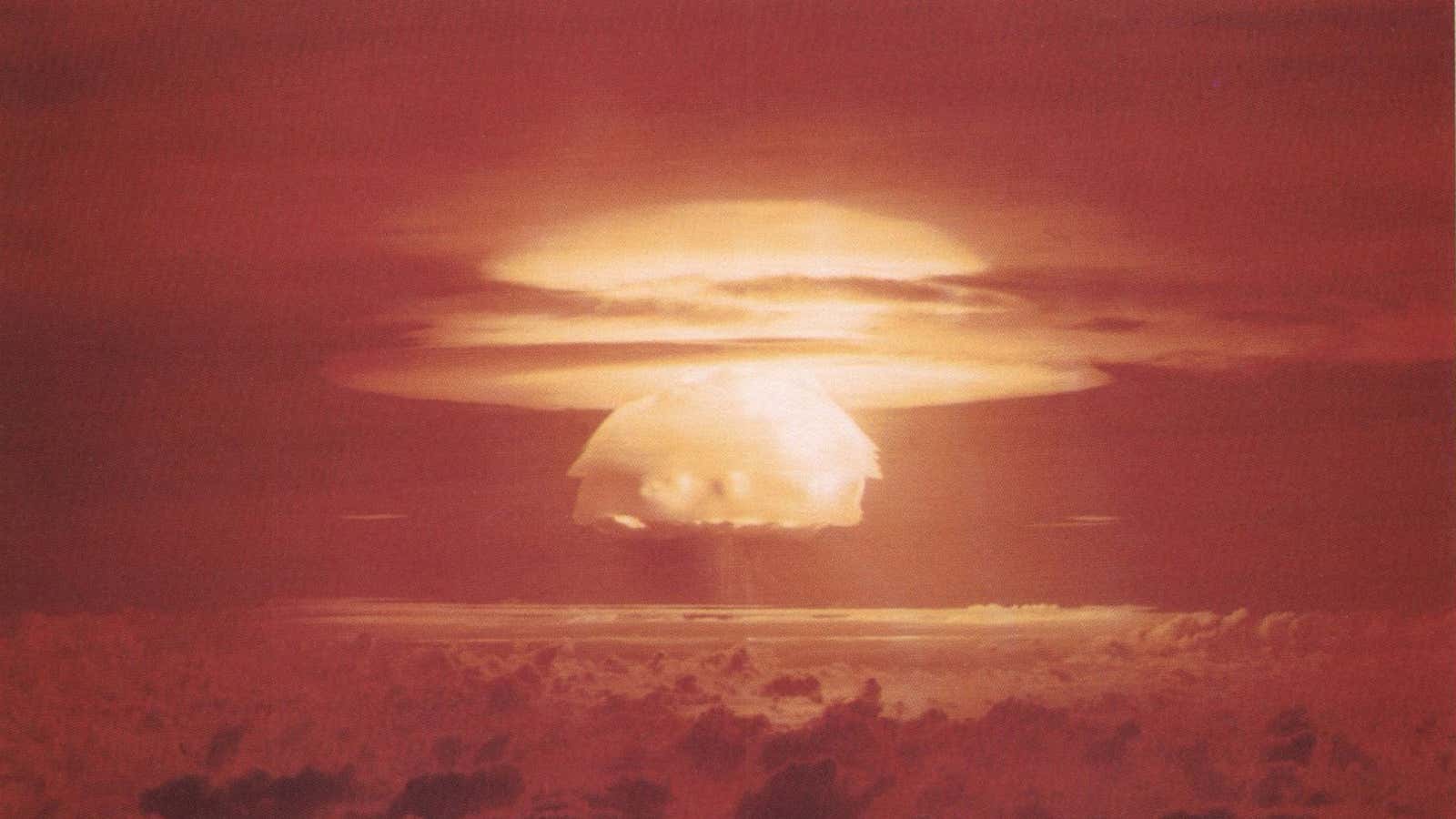It’s been more than 10 days since North Korea conducted its sixth and largest nuclear test. The country’s Nuclear Weapons Institute claimed that it was a successful test of a hydrogen bomb.
We still don’t know whether to believe the claim or not. South Korea’s Nuclear Safety and Security Commission published a report saying that, though it can confirm the explosion came from a nuclear weapon, it is unable to conclude if it was or wasn’t a hydrogen bomb.
“I’m assuming it was a hydrogen bomb,” the US nuclear commander, John Hyten, told a group of reporters on Sep. 14. “I have to make that assumption as a military officer.” Hours later, North Korea launched another intercontinental ballistic missile (ICBM) that flew 3,700 km over Japan and landed in the Pacific Ocean.
How is it that the world’s most advanced nations—the majority of whom are opposed to North Korea’s nuclear tests—are unable to tell whether the nuclear explosion was an atomic bomb or a hydrogen bomb?
The answer matters because a hydrogen bomb is orders of magnitude more powerful than an atomic bomb. Worse still, if North Korea has the technology to build a hydrogen bomb, it may be able to build a boosted atomic bomb, which uses a small hydrogen bomb to increase the yield of an atomic bomb and which can be small enough to put atop the country’s growing number of long-range missiles.
What’s probably frustrating is that the laws of chemistry are likely to ensure that world is never able to find out the true chemical nature of North Korea’s bombs.
An atomic bomb makes use of the power of splitting a large atom, such as uranium or plutonium. During nuclear “fission,” many types of small atoms are formed. One of those is radioactive xenon gas, which floats out even if the test was performed underground. This radioactive gas decays very quickly, and its detection using sniffers can tell us exactly when the atoms were created and thus point to the time of the nuclear fission bomb.
The capability of atomic bombs—two of which destroyed the Japanese cities of Hiroshima and Nagasaki—pale in front of a hydrogen bomb, which makes use of the power of fusing small atoms to form larger ones, such as hydrogen to form helium. To trigger nuclear “fusion,” however, the hydrogen has to be compressed in a very tight space and heated to the temperatures that exist inside the sun. This is achieved by creating a small fission bomb outside, which then triggers the fusion reaction.
The main gas produced during the fusion reaction is helium, and it’s no different from the normal version. Thus, it can’t be used to detect a hydrogen bomb. However, it may be possible to detect a hydrogen bomb, based on the ratio of different types of xenon gas produced during the explosion. How it is done is considered a state secret.
We don’t know if South Korea or the US performed these tests. But it wouldn’t be outrageous to assume that they would try everything possible to ascertain the nature of the nuclear weapon. If they did and they are still unable to confirm it, the xenon gas test may not always work in being able to differentiate the bomb types.
The only sure way to differentiate between the two types of bomb is to chemically test the site of the explosion. Atomic bombs and hydrogen bombs are likely to produce elements in different ratios, even if the latter needs an atomic bomb to get going. Unless North Korea gives access to the test site, which it is clearly not going to do, the world may not be able to tell if the North Korea test is of a really large atomic bomb, a hydrogen bomb, or a boosted atomic bomb.
There is, however, one problem in North Korea’s nuclear program which may provide some relief. Even if North Korea has a hydrogen bomb, it hasn’t yet succeeded in “re-entry tests” to ensure such a bomb works when put on top of an intercontinental ballistic missiles. As missiles hurtle down towards their target, the heat created by the atmosphere can cause the nuclear warhead to fail.
Based on seismic data, the latest North Korean nuclear test on Sep. 3 had the power of between 50 kilotons of TNT equivalent (kt) and 250 kt. So the bomb could be as much as 15 times the size of the bomb that destroyed Hiroshima, and that’s terrifying no matter what kind of nuclear bomb it may be.
